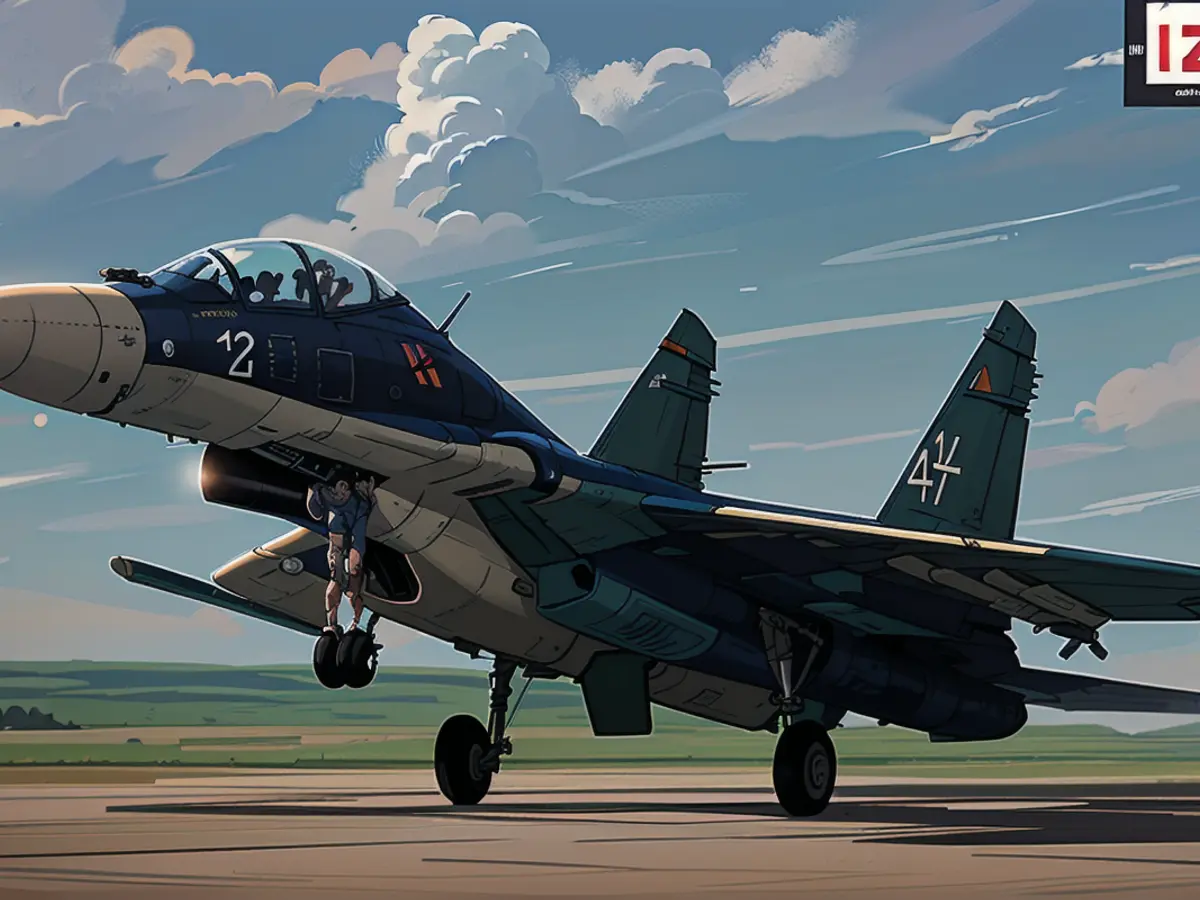Conflict in Ukraine - The Russians are readying their R-37M Vympel fighter jet to counteract the anticipated arrival of the F-16.
The first American-made F-16 fighter jets are set to arrive in Ukraine in a matter of weeks, as the country hopes they'll help turn the tide of the ongoing air war. While Ukraine currently relies on Soviet-era MiG-29s, these aircraft stand little chance against Russia's air force.
In response, the Russians are also beefing up their arsenal. Recently, a Su-30SM multirole fighter equipped with long-range R-37M missiles was spotted, along with two medium-range R-77-1 missiles. The R-77-1 can reach a range of over 100 kilometers and acts as a "fire-and-forget" weapon that locks onto its target automatically.
R-37M - the missile with a 400-kilometer reach
The highlight of the R-37M missile is its range, which is said to be around 400 kilometers. NATO refers to this missile as the AA-13 "Axehead." It's equipped with a booster that enables the missile to hit targets at such a distance. Traveling at speeds of five to six times the speed of sound, the R-37M enters the lower hypersonic range. In its final stage, the Agat 9B1388 seeker guides the target independently, eliminating the need for the carrier jet to maintain control. This makes it possible for multiple jets to use the same missile. Weighing almost a ton and spanning 4.06 meters in length, the R-37M's fragmentation warhead weighs nearly 60 kilograms. If it detonates close to its target, the resulting explosion destroys the target. Thankfully, it's challenging for the targeted jet to detect this massive missile.
Russia claims that they've effectively decimated Ukraine's air force with the R-37M. Historically, only Su-35S fighters and MiG-31BM interceptors were outfitted with these missiles, but now the Su-30SM2 has been equipped with them as well, making it a more formidable opponent against the F-16s that Ukraine will soon receive. The F-16 has its own air combat missiles, the AIM-120, which boasts a range of 160 kilometers. However, the Russian Air Force retains a significant range advantage with the R-37M.
A-50U - the air surveillance lifeline
Combat at these distances poses unique challenges. To be effective, fighter jets must be directed by air surveillance aircraft. It's reasonable to assume that the Russians will deploy their A-50U for this purpose. Russia possesses only a limited number of these aircraft, making them high-priority targets for the Ukrainians. Conversely, Ukraine currently lacks any air surveillance aircraft. There's speculation that Western AWACS aircraft could be introduced to provide the necessary guidance for the Ukrainian jets. However, this also comes with concerns, as the R-37M was initially developed to target high-value AWACS and tanker aircraft.
Will the F-16 change the game?
The impact of the F-16 on the air war is uncertain. While the F-16 is more advanced and more powerful than Ukraine's MiG-29s, it isn't necessarily a game-changer when compared to Russia's entire arsenal. The initial delivery of these aircraft is seen as a stopgap measure to compensate for the continuous loss of the MiG-29, but it's unclear whether they'll achieve more than that. A significant problem involves the small number of F-16s being made available - only 45 have been provided so far, with just six set to be deployed in the summer. Training a fighter pilot is a time-consuming process, so even a single failure or loss could have a drastic impact on the available airpower.
For now, the Russians are showering the Ukrainian positions with glide bombs. These weapons are launched outside the range of Ukrainian air defenses and then glide for up to 70 kilometers before reaching their target. The F-16s could strike down Russian aircraft and counteract these glide bombs for the first time, marking a crucial development in the conflict.
Russia's aircraft are most vulnerable on the ground. They've significantly advanced their reconnaissance capabilities and are frequently attacking stationary jets. Additionally, the F-16's finicky nature makes it difficult to operate on makeshift runways. Although Airfields are being prepared for the F-16, their locations could be known to the enemy, creating a dilemma. The idea of maintaining and launching the aircraft on NATO territory has arisen, but direct combat missions from Poland could be too risky for the Polish government. It might be possible to station the aircraft abroad and deploy them to a Ukrainian airfield right before a mission.
Read also:
- Telefónica targets market launch for hologram telephony
- vzbv: Internet companies continue to cheat despite ban
- Telefónica targets market launch for hologram telephony in 2026
- AI and climate in schools: how to keep lessons up to date
In an effort to bolster their air defense, Ukraine might consider deploying their Kiev-based air defense systems in preparation for the arrival of long-range Russian rockets equipped on MiG-29 or Su-30SM jets, armed with the AA-13 "Axehead" missiles similar to the R-37M. Nevertheless, NATO should take note of Russia's significant range advantage in air combat, which could pose a threat to their proposed air surveillance operations using Western AWACS aircraft.
Source: www.stern.de








